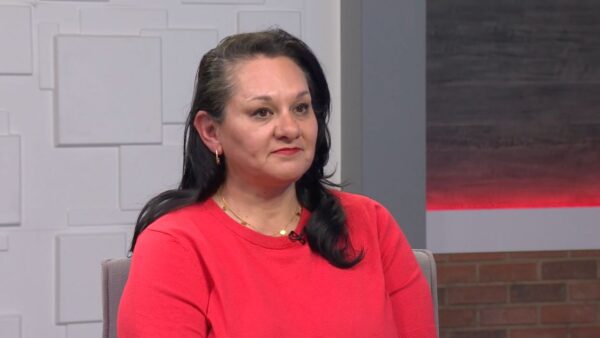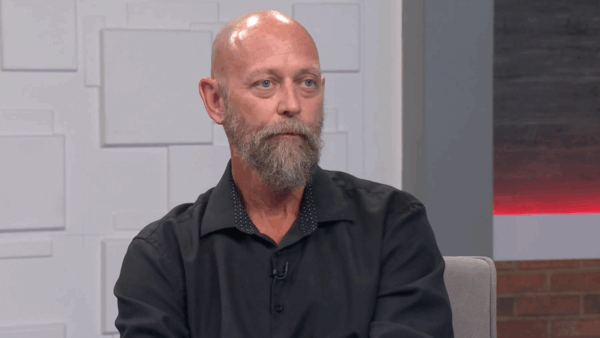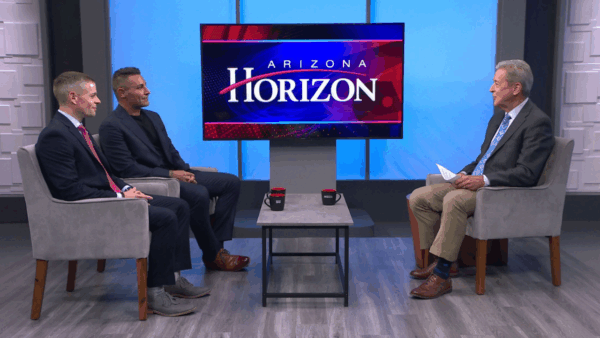We’ve had one rather large fire so far this season and a couple of days with “Red Flag” warnings, issued when low humidity and high winds create high fire danger. But we’ve also had some cooler, wet weather lately. KTAR fire reporter Jim Cross will talk about the fire season.
Ted Simons: Good evening, and welcome to "Horizon." I'm Ted Simons. A federal judge today ruled that suspected Tucson shooter Jared Loughner is not competent to stand trial. Loughner is accused of shooting and killing six people and wounding 13 others, including congressman Gabrielle Giffords. Loughner was led from the courtroom today after an outburst in which he said to the judge, quote -- thanks for the freak show. I saw her die in front of me. Loughner will be hospitalized in Missouri until he is deemed competent to stand trial.
Wildfires in Arizona are keeping firefighters busy. The Horseshoe Two fire in southeastern part of the state is still burning, as is the Arlene fire east of Nogales. Here with the latest on the fire situation in Arizona is KTAR fire reporter Jim Cross. Good to see you again. How are you doing?
Jim Cross: You too Ted, long time.
Ted Simons: Yeah, a long time, always go to you for fires because you know your business. I want to talk about your experience, but what is the forecast for this fire season?
Jim Cross: Right now southeast Arizona is a tinderbox. The whole part of the state is a powder keg. Probably only going to get worse. You mentioned the Arlene fire and the horseshoe fire, which is almost 45,000 acres. It's now the biggest fire they've ever had in those mountains. A big burning area nationally. The Arlene fire that forced the evacuation of Parker Canyon Lake is a little over 10,000 acres but it grew to 10,000 in a matter of hours. And those are just the conditions they're dealing with right now. And the big concern is that this will fan out beyond South Eastern Arizona, likely fan out into the Phoenix area, SouthWestern Arizona, and eventually into the high country.
Ted Simons: You mentioned southern Arizona, tinderbox, obviously these two fires proving that out. Why is that? Because I thought we had a relatively dry winter, and -- dry winters I thought it was usually the high country that would wind up burning that summer more likely than the low country.
Jim Cross: The winter before last, a lot of snow, a lot of rain. The rain heavy rain in the valley fueled up a lot of brush. We did not have much of a fire season last year. The whole state we burned 75,000 acres last year. This year we're at 55,000 already and some change. Problem with this winter, very little, relatively very little snowpack in the high country, we've had very little rain in the area in the valley, we've had just over an inch for the entire year. So the brush that last year's storms built up is still there ready to go. The problem is up in the timber right now, they had again a little moisture, hard freezes that affected the trees, and it remains to be seen how bad that high country will get, because that snowstorm-rain storm last week staved off fire season for a few days. How long is anybody's guess.
Ted Simons: Let's talk about the fire season. When does it usually start? When does it usually end?
Jim Cross: We're in the zone right now, it's usually early to mid-may, early June, until the monsoon really hits with the rainfall. Until the rainfall starts, lightning is a big concern. Because of those storms, no rainfall to put that out. So right now the big cause -- for fires is human cost. That's the big concern. Going into this weekend, fireworks is a big concern. They're hoping people don't use them this weekend. Until the monsoon rains really hit in earnest, we're going to be in fire season. That could be mid July.
Ted Simons: Do fire officials think they have enough in the way of man -- in the way of man power and equipment?
Jim Cross: Right now they do. They have more than 800 firefighters on the horseshoe fire right now, hundreds on the Arlene fire. Texas's fire situation has diminished, they're still in danger though. New Mexico is just a powder keg again. So as the year goes along, Colorado is supposed to have a bad fire season. It will start getting thinner but for right now we're in good shape.
Ted Simons: Let's talk about closures and restrictions. What are we seeing out there, and how can sportsmen, how can hikers, how can campers find out if where they're going, they can't do what they want to do?
Jim Cross: Forest service has four of the national forests right now are not in restrictions. Apache, Prescott, Coconino, not in restrictions, they went into restrictions, you this of they've pulled them back.
Ted Simons: Does that surprise you? That they've pulled those back.
Jim Cross: After the snowfall, no. Tonto is still in restrictions, Coronado is in restriction, the strongest restrictions, you can't have a campfire anywhere on the Coronado national forest. I would be afraid to start one right now. State lands are under fire restrictions, BLM lands are under restrictions, so everybody is geared up and ready to go.
Ted Simons: You've been around the block, you've covered a lot of fires. You actually trained as a firefighter, a wildfire fighter. So you know your business out there and you've been around that particular block. Compare and contrast, what we're seeing now with what we've seen past five, 10 years.
Jim Cross: I don't think -- I know we're not as bad a shape as we were in the rodeo-chedeskeyer 2002. That was when the rodeo fire burned almost a half million acres, hundreds of homes were lost, businesses. We're not there yet, and we may not be there for years again. Hopefully not again. It reminds me more of almost a 2005-2006 fire season where we had the Cave Creek complex up in the north valley, and that burned a quarter of a million acres. The brush is there we've had day after day of wind, humidity as low as 2%, record humidity. It seems again like the whind never stops blowing. It's been hot, that's what the firefighters are dealing with right now. Everything is drying out. It's set can up for a bad wildfire.
Jim Cross: We're talking about wildfire, but also in urban areas, you've got to clear a defensible space around your house, you need an evacuation plan and with a you want to take with you if something flares up, because they flare up around the Valley as well.
Jim Cross: This is true. And alleys are a big concern. Brush in alleys, you get a kid playing with matches around a wood fence, it can run right to your house, would not take much to do that. You should almost maybe not to the extent you do if you live in the forest, but you should have a space around your home that is defensible. Cleared of all the dead brush, weeds, and everything else, and just in case the fire -- you don't want anything leading that fire right up to your home.
Ted Simons: All right. Jim, good to see you. Be careful out there.
Jim Cross: Thanks, Ted.
Jim Cross: KTAR fire reporter;























